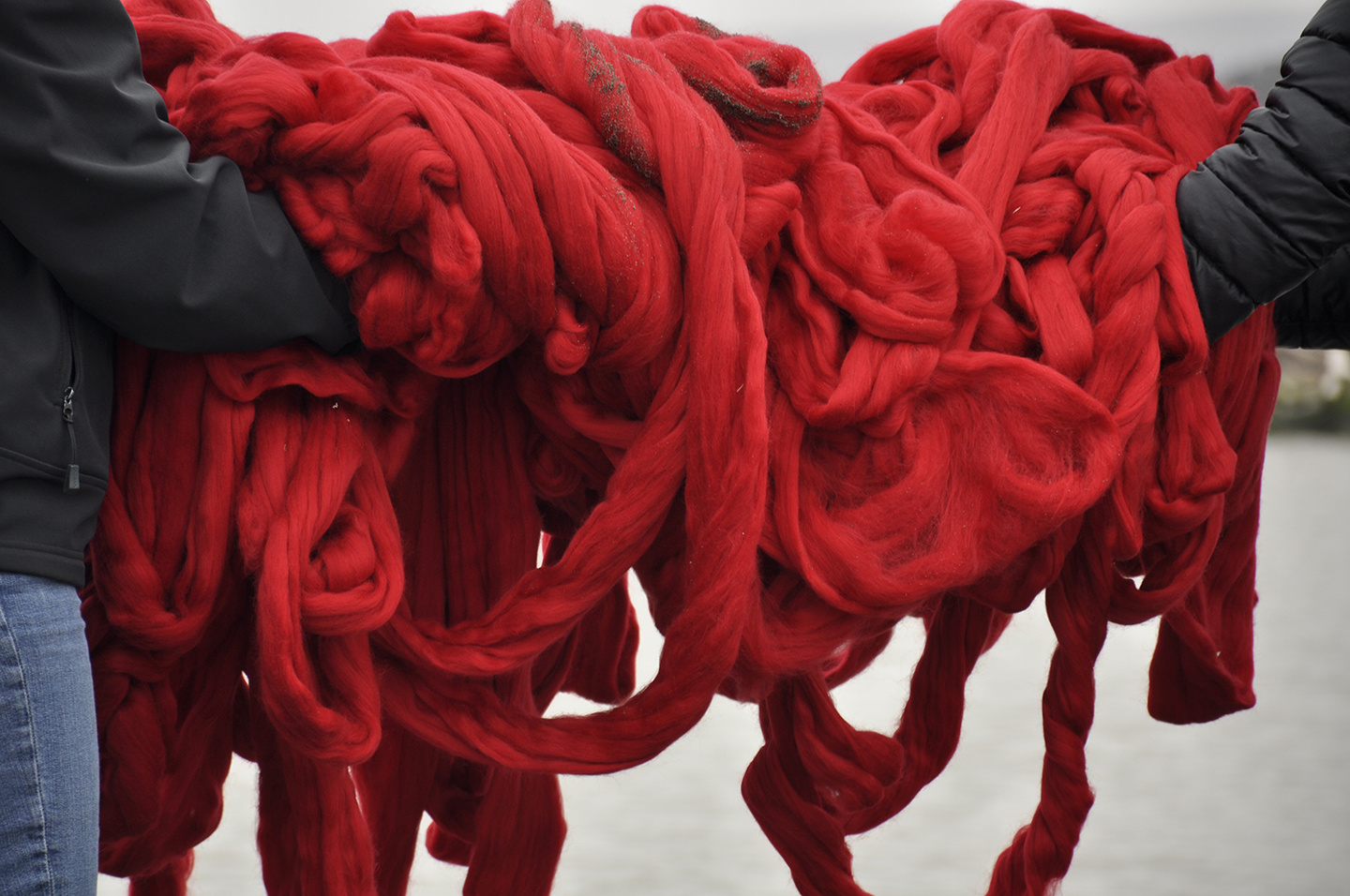Although better known as a poet in her adoptive North American home (she has lived in New York since the 1980s), Cecilia Vicuña has stayed true to her youthful calling as a genre-bending visual artist for more than forty years, and her site-specific projects highlight the artist’s talent for composing poems in space, for a visceral lyricism in three dimensions. Vicuña refers to these particular works as “quipoems”—a contraction of poem and quipu; an online dictionary defines quipu, rather reductively, as “a device consisting of a cord with knotted strings of various colors attached, used by the ancient Peruvians for recording events, keeping accounts, etc.” A pre-Columbian type of writing, in other, more poetical words—product of a literary tradition that has given the world such luminaries as Gabriela Mistral, Pablo Neruda, and Nicanor Parra. Vicuña, who was born in 1948 in Santiago de Chile, is supremely aware of the weight of Indigenous history anchoring twentieth-century Latin American culture.
Blown up to the monumental proportions of immersive “soft sculpture,” her recent Athenian quipoem consists of giant strands of untreated wool, sourced from a local Greek provider, dyed a startling crimson in honor of a syncretic religious tradition that, via the umbilical cord of menstrual symbolism, connects Andean mother goddesses with the maritime mythologies of ancient Greece.
Her early figurative paintings made in the early 1970s juxtapose portraits of female poets (including Mistral) with a phalanx of male political heroes such as Karl Marx, Vladimir Lenin, Fidel Castro, and Chile’s very own Salvador Allende—though their steadfast masculinity appears deliciously corrupted by Vicuña’s trademark Pop-painterly touch, as evinced in the halolike garland of flowers surrounding Marx’s head or the curious genital imagery peopling the surreal landscape against which Lenin is portrayed. Painted in 1972, these portraits now look like melancholy mementos of a utopian moment cut short: a year later, a CIA-supported and Pinochet-led military coup spelled the bloody end of Allende’s socialist experiment, forcing the artist into a state of exile—first to London, then Colombia, then New York—from which she has never really returned.
—Dieter Roelstraete


